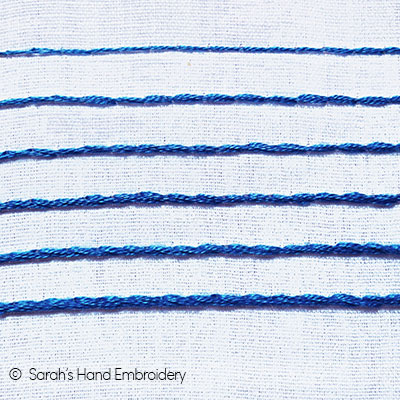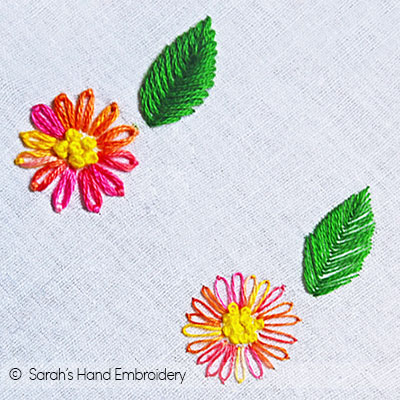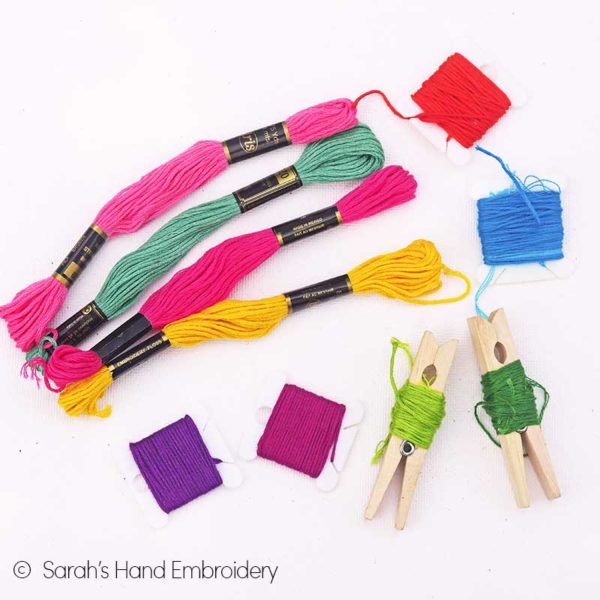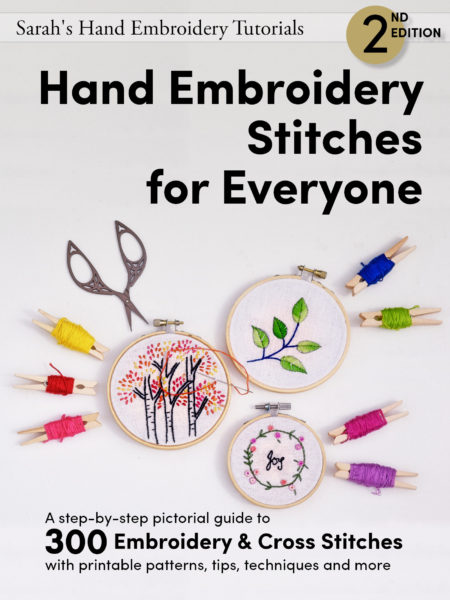
How many strands of thread to use?
Embroidery floss can be divided into different strands, and their thickness can be regulated. There is no ‘right’ answer to how many strands to use as it depends on what you are stitching and the desired result you are looking for.
Check the photo below to compare the thicknesses that different strands of embroidery floss can produce. I have stitched the Stem Stitch using one to six strands of thread.
 | A single strand of the embroidery floss is often used for a more refined embroidery like the ones using the Satin Stitch. The fewer the strands, the more delicate and flat the stitching will be. Six Strands of the embroidery floss are used for a chunkier or embossed outcome. Contemporary embroidery styles do not shy away from using all six strands in their projects. |
That being said, using fewer strands of thread can take more time to finish a project. At the same time, using fewer strands also means economizing on the thread consumption. The more strands you use, the faster your skeins of thread finish.
Look at the picture below. The same pattern is worked in six strands (left) and one strand (right). The difference is pretty visible.
 | The thread thickness can also be dependent on the fabric you use. Most often, fewer strands work better on delicate fabrics. More strands would mean a bigger needle that need not be friendly with all thin material. You can test your needle and thread on the corner of the fabric before applying them to the actual project. As for the rest, experience is the key. So, stitch with different strands and experiment as much as you can |
More pages on threads
Learn the Straight Stitch along with 305 other stitches from our 600-page eBook.










